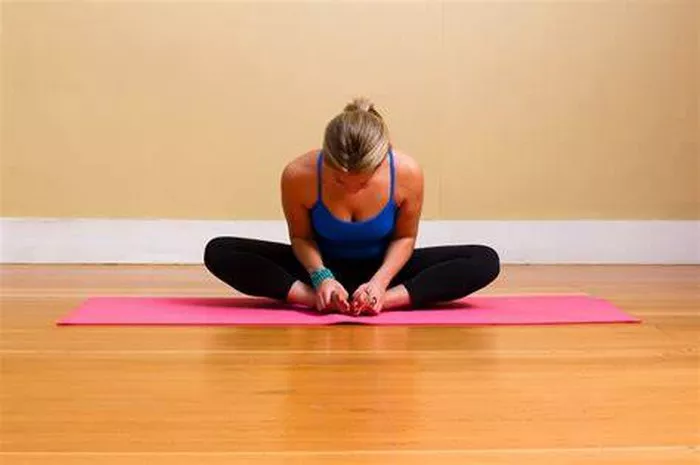Yoga, an ancient discipline originating in India, is a spiritual, mental, and physical practice aimed at achieving inner peace, balance, and self-awareness. One of the core components of yoga is the exploration and transformation of consciousness. In the yogic tradition, it is believed that human consciousness exists on multiple levels, each representing a different state of being and awareness. Understanding these levels is crucial for anyone who wishes to deepen their practice of yoga and embark on a journey of self-realization.
In this article, we will explore the four primary levels of consciousness in yoga: Waking Consciousness (Jagrat), Dreaming Consciousness (Svapna), Deep Sleep Consciousness (Sushupti), and the Fourth State (Turiya). Each of these states plays a significant role in our daily lives and spiritual growth. Let’s delve into each level of consciousness in detail.
1. Waking Consciousness (Jagrat)
The first level of consciousness is Jagrat, which is the state of waking awareness. This is the level of consciousness that we are most familiar with in our daily lives. When we are awake and engaging with the external world, we are operating in Jagrat. It is the state in which we interact with our environment, make decisions, and perform daily tasks.
In this state, our mind is constantly processing sensory information—sight, sound, smell, taste, and touch—and organizing it into thoughts, feelings, and actions. This is the active state of the mind, where we experience duality, such as right and wrong, good and bad, pleasure and pain.
Characteristics of Jagrat:
Sensory Awareness: The body is fully alert, and the mind is actively engaged in processing sensory data.
Rational Thinking: The mind operates in a logical, analytical, and often judgmental manner.
External Focus: Our attention is focused on the outer world, and we interact with it through the physical senses.
Duality: This state is marked by the experience of dualities, such as light and dark, pleasure and pain, and good and evil.
While waking consciousness is necessary for functioning in the material world, yoga teaches that it is also limited because it often leads to distraction, stress, and an overemphasis on external stimuli. The goal of yoga is to transcend the limitations of Jagrat by moving into deeper, more refined states of consciousness.
2. Dreaming Consciousness (Svapna)
The second level of consciousness is Svapna, or the dreaming state. This state occurs when we are asleep, but our mind is still active. During Svapna, our minds are not engaged with the external world, but instead, they wander into the realm of dreams, memories, and imagination.
In this state, the conscious mind is at rest, but the subconscious and unconscious mind become more prominent. Thoughts and images from the waking state, as well as unresolved emotions, desires, and fears, often emerge in the form of dreams. The mind becomes more creative and less bound by logic and reason.
Characteristics of Svapna:
Subconscious Activity: The subconscious mind is more active in this state, and dreams often reveal hidden desires, fears, and unresolved conflicts.
Lack of External Awareness: There is no direct engagement with the external environment; instead, attention is focused on inner experiences and projections.
Symbolic Perception: Dreams are often symbolic and not bound by the rules of linear time or space. The mind creates stories that are deeply personal and often illogical.
Emotional Influence: The emotional states from the waking consciousness can be magnified or distorted in the dream state, leading to vivid or unsettling dreams.
From a yogic perspective, Svapna is significant because it reveals the workings of the subconscious mind. The content of our dreams can offer valuable insights into our psychological state and unresolved emotional issues. In many yogic traditions, dream interpretation and lucid dreaming are used as tools for self-exploration and inner transformation.
3. Deep Sleep Consciousness (Sushupti)
The third level of consciousness is Sushupti, the state of deep, dreamless sleep. In this state, the individual experiences complete rest and detachment from the external world, the senses, and the mind. This is the state where the mind is in a state of pure potential, free from the fluctuations of thoughts and emotions.
Unlike Jagrat and Svapna, where the mind is active and engaged, Sushupti is a state of stillness and silence. There is no awareness of the external world, nor are there any mental projections or emotional disturbances. This state is often described as a state of deep peace and tranquility, a temporary merging with the universal consciousness.
Characteristics of Sushupti:
Absence of Thought: The mind is free from the usual chatter, thoughts, and mental activity.
Physical Rest: The body is fully relaxed, and there is no sensory perception of the external world.
Blissful Experience: Many yogis describe Sushupti as a state of bliss, peace, and unity with the cosmos. It is a state of pure consciousness, without the distractions of the waking mind or the dreaming mind.
Transcendence of Duality: Unlike Jagrat, which is marked by duality, and Svapna, which can be influenced by the subconscious, Sushupti is a state of undifferentiated awareness. There is no sense of time, space, or individuality.
Sushupti is significant in yoga because it represents a state of deep rest and rejuvenation. In this state, the body and mind experience profound healing, and the individual temporarily transcends the limitations of the material world. Many meditation practices aim to cultivate a state of Sushupti while maintaining awareness, as this is thought to lead to spiritual awakening.
4. The Fourth State (Turiya)
The fourth and highest level of consciousness is Turiya, which is sometimes referred to as the “fourth state of consciousness” or “the state of pure consciousness.” This is the most profound and subtle level of awareness, representing the ultimate goal of yogic practice.
Turiya is not a state that can be directly compared to the other three states—Jagrat, Svapna, and Sushupti—because it transcends them all. While Jagrat is the waking state, Svapna is the dreaming state, and Sushupti is the deep sleep state, Turiya is the underlying awareness that pervades all of these states. It is the state of pure, unchanging consciousness that exists beyond time, space, and individuality.
In Turiya, the individual experiences a sense of oneness with the universe, where there is no separation between the self and the cosmos. It is a state of deep awareness, often described as bliss, peace, and enlightenment.
Characteristics of Turiya:
Non-Dual Awareness: In Turiya, the individual experiences a state of pure, undifferentiated awareness. There is no duality, no separation between self and other.
Unity with the Cosmos: There is a profound sense of connection with all of existence. The individual feels a deep oneness with the universe and experiences transcendental bliss.
Stillness and Silence: Turiya is marked by a deep inner silence. There is no mental activity, no thought, and no distraction. It is the state of pure awareness, free from the fluctuations of the mind.
Beyond Time and Space: Turiya transcends the limitations of time and space. It is not bound by the physical world or the mind’s projections.
Turiya is considered the highest state of consciousness in yoga because it represents the realization of our true nature. It is often described as the state of “Self-Realization” or “Enlightenment.” In this state, the individual is said to experience the deepest level of spiritual awakening, free from the illusions of the material world.
Conclusion
The four levels of consciousness in yoga—Jagrat, Svapna, Sushupti, and Turiya—offer a profound framework for understanding the different states of being and awareness that we experience throughout our lives. Each level has its unique characteristics, and by exploring and cultivating these states through practices such as meditation, pranayama, and self-inquiry, we can deepen our understanding of ourselves and our connection to the universe.
While Jagrat, Svapna, and Sushupti are the more familiar states that most people experience, Turiya represents the highest potential of human consciousness. It is the ultimate goal of yoga to move beyond the limitations of the waking mind and to access the deeper, more subtle levels of consciousness, eventually leading to self-realization and enlightenment.
Through consistent practice, one can begin to witness and transcend these levels of consciousness, ultimately awakening to the truth of who we are: pure consciousness, boundless and eternal.
Related topics

















